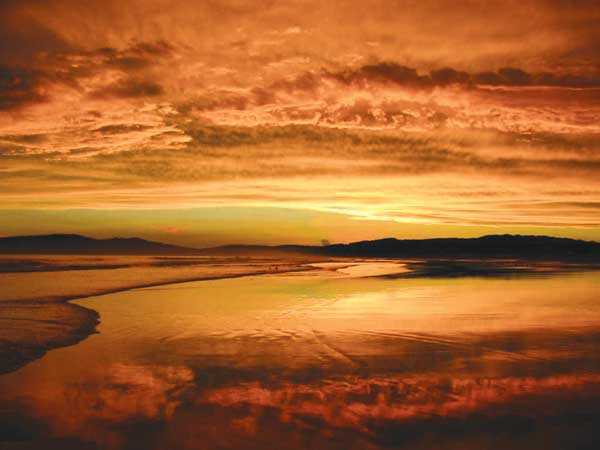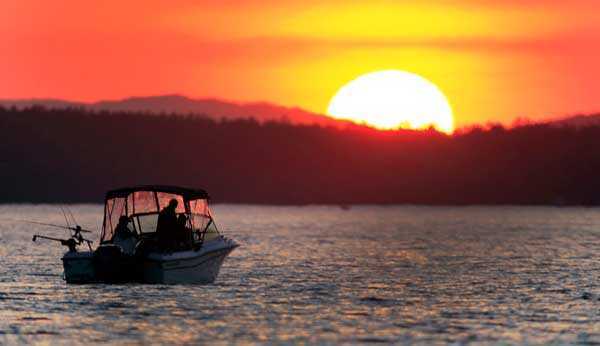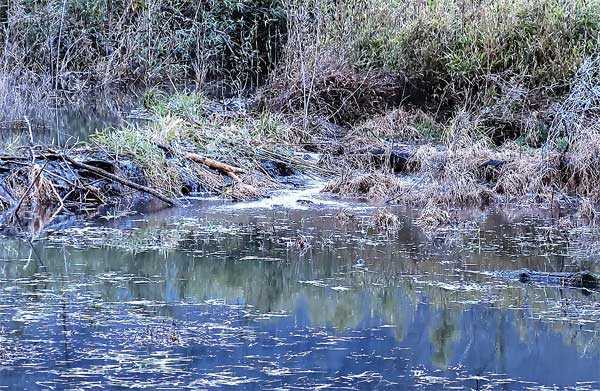Fish are like people, only wetter. Both like comfortable surroundings, food and protection from danger.
Freshwater fish are restricted by lake or river banks. Fish such as pike, musky, walleye, largemouth, smallmouth, crappie, panfish, perch, several species of trout, salmon, shad, carp, and lake trout can all live in the same water, but in different parts and utilizing different structure.
Many saltwater coastal fish such as stripers, bluefish, redfish, seatrout, sea bass, barracuda, cobia, snook, drum, bonito, dolphin, flounder, grouper and sharks have a larger range than freshwater species.
And while both freshwater and saltwater fish along our three coasts are different, it is easy to figure out how best to fish for them.
In this, it helps to know a little about some basics of rivers, streams, lakes and ponds in freshwater; sounds, bays, inlets and reefs in saltwater.
In freshwater, structure and current flows are important as are weed beds, drop-offs and other unique features of any waterway. Crappie like brush piles, pike like weed beds as ambush points, river and stream trout hang around the buffer zones of rocks and logs, smallmouth like rocky structure, largemouth like woody structure, walleye like rocky bottoms and many fish follow the temperature/oxygen gradient thermocline zones.
In coastal saltwater, tides are important, since bait moves and fish feed on a rising or falling tide. With narrow-neck inlets, gamefish often gather at this neck as tides move huge volumes of water and with it the bait trying to get out of an increasing shallow area as a tide falls or into a protected area and out of the open ocean with a rising tide.
Think of tides just as you would a river current. Saltwater fish rest and hide on the down current side of structure such as pilings, rip-rap, artificial fishing reefs, etc. for protection and also to rest against the fast tidal current.
Salinity in long bays or estuaries can increase or decrease depending upon rainfall in your region. This in turn can affect movement of some saltwater species in and out of a coastal area.
One big plus to summer fishing is that water temperatures rise and continue to rise and plateau through early fall. This makes summer the very best for lots of fish and big fish. Fish are cold blooded and thus have metabolic rates based on their surrounding water temperature. In the summer, every increase by 10 degrees Centigrade doubles a fish’s metabolic rate and their feeding. This means that with warmer summer water temperatures, fish feed more and more readily take the lures, baits and flies we throw to them.
Of course, all fish differ with their surroundings. Maine smallmouth differ from Florida largemouth and northwest states salmon vary from the more southern West Coast river shad. The rainbow trout rivers of the West Coast differ from the smaller East Coast trout streams and rivers. In salt water, northeast stripers vary widely in habits from southern mangrove-hiding snook, West Coast salmon differ from East Coast shad, and rapidly moving bluefish differ from reef-hugging grouper.
One way to find the best fishing in your area is to make friends with the biologists in your state fisheries agency. Each agency, regardless of name, is charged with the responsibility of managing game fisheries, fresh water and salt. Most states have one or more biologists whose main responsibility is a specific inland or coastal gamefish. Making contact with that biologist can acquaint you with the fish habitat, feeding habits, best areas, popular baits, concentration of fish, movements, spawning runs and habits of the fish you seek.
Another good source of river information is through the Riverkeeper Alliance (www.riverkeeper.org). Started in 1966 on the Hudson River, NY, this alliance has river keepers on many rivers whose job is to patrol the river. Many of those patrolling are fishermen. As a result, they are an excellent source of knowledge about river game fish, riverine conditions, and fish habits, habitat and migrations.
Learning the migration patterns and spawning runs of fish you seek is also important. On the East Coast, shad runs begin in Florida around January and conclude in Maine around June. Much of this is function of the light levels as spring progresses, along with increasing water temperatures.
Similarly, on the West Coast, shad and the several species of Pacific salmon migrate and spawn at different times, making record keeping and knowledge of the fish in your immediate fishing area mandatory to fishing success.
It also helps to check the research of the major tackle and lure companies. Some years ago, lure manufacturer Berkley researched bass feeding habits on crayfish. They made molds from real crayfish and then soft plastic exact replicas along with variations that lacked body parts such as claws, legs, tails, head, etc. Controlled tests allowed them to present each type of soft plastic lure to bass and record the results.
The findings were that bass favored a simple body and tail lure, without legs and claws. That makes sense, since underwater films have shown that claws of crayfish are a real impediment to a bass trying to mouth a tasty crayfish morsel. That also explains why simple lures such as a grub tail or tube lure, often in a drab brown or green color, produce so well for both smallmouth and largemouth bass.
If fishing with a buddy or two, it also helps to vary baits and lures until finding the sweet lure for the day. If both are fishing the same color and type of lure and the fish are not interested, you won’t find what works. Mix up lures from shallow to deep, a fire tiger red vs. a pale shad bait color, spinnerbait vs. a crankbait, a deep jig vs. a shallow running spoon. Once one lure, color or depth starts to produce action, then everyone can switch over to the producing lure.
Thinking ahead of the game and making a buddy of your fisheries biologist and a pal of your River Keeper patroller will go a long way to giving you the edge on catching more and bigger fish – fresh or saltwater.
[easy-social-share]


